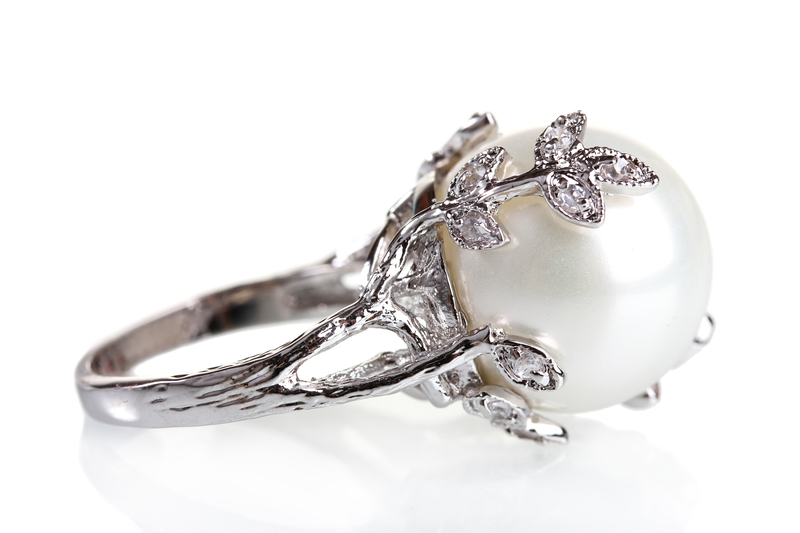Removing Oil Stains from Fabric Efficiently
Posted on 13/10/2025
Understanding Oil Stains on Fabric
When it comes to household stains, oil is one of the most stubborn contaminants to remove from fabric. The greasy nature of oil makes it cling to cloth fibers, creating dark patches that can be challenging to treat. Knowing how to remove oil stains efficiently can save your favorite fabric items from being ruined.

Immediate Actions: Tackling Oil Stains Promptly
One of the key aspects of dealing with oil stains is to act fast. The sooner the oil is treated, the easier it will be to remove. Here's a step-by-step guide to handle the situation efficiently:
1. **Blot the Stain**: Use a paper towel or cloth to blot up as much oil as possible. Avoid rubbing as it can spread the stain further.
2. **Use Absorbent Materials**: Products like baby powder, baking soda, or cornstarch can absorb the excess oil. Sprinkle generously over the stain, let it sit for about 10-15 minutes, and then brush off the powder.
Deep Cleaning: Removing Set-in Oil Stains
For oil stains that have set into the fabric, more thorough treatments are necessary.
1. **Dish Soap Method**:
- Apply a few drops of dish soap directly on the stain.
- Rub gently to create suds.
- Let it sit for a few minutes.
- Rinse with warm water.
2. **Vinegar and Baking Soda**:
- Mix equal parts of vinegar and baking soda to form a paste.
- Apply the paste to the stain and let it sit for about 30 minutes.
- Rinse with warm water and wash as usual.
Commercial Stain Removers: Efficient Solutions
Commercial stain removers are specifically formulated to handle oil stains and can be very effective. Products like OxiClean, Zout, and Shout have specific instructions for use, which usually go as follows:
1. **Pre-treat**: Apply the stain remover to the affected area.
2. **Let it sit**: Allow the product to penetrate the fabric for the time specified on the product label.
3. **Wash**: Launder the fabric following the care instructions.
Washing and Drying: The Final Steps
Once pre-treatment is complete, you can launder the fabric. Follow these steps for the best results:
1. **Use Hot Water**: Hot water helps in breaking down the oil molecules. However, always check the fabric care label to ensure that it can withstand the heat.
2. **Inspect before Drying**: Before placing the item in the dryer, ensure that the stain has been completely removed. The heat from the dryer can set any remaining oil stain, making it even harder to remove.
Pros and Cons of Different Methods
**Pros:**
- **Immediate Blotting**: Prevents the oil from spreading and soaking deeply into the fibers.
- **Homemade Remedies**: Cost-effective and readily available.
- **Commercial Stain Removers**: Specifically designed to target oil stains more effectively.
**Cons:**
- **Immediate Blotting**: If not done carefully, can spread the stain.
- **Homemade Remedies**: Can require several applications and may not work on all fabrics.
- **Commercial Stain Removers**: Can be expensive and contain chemicals that might not be eco-friendly.
Additional Tips for Efficient Oil Stain Removal
- **Test First**: Always test any cleaning method on a small, inconspicuous area of the fabric first.
- **Read Labels**: Be sure to follow garment care labels to avoid damaging the fabric.
- **Patience is Key**: Sometimes, it might take more than one attempt to completely remove the stain.

Takeaways
- Act quickly to blot and absorb as much oil as possible.
- Use a combination of homemade remedies and commercial products for effective stain removal.
- Always inspect the stain before drying to ensure complete removal.
Conclusion
Removing oil stains from fabric can be a daunting task, but with the right approach, it is entirely manageable. Immediate action, proper pre-treatment, and using effective cleaning solutions can save your favorite clothes from the brink of ruin. By following these steps and tips, you can handle oil stains efficiently and keep your fabrics looking fresh and clean.









